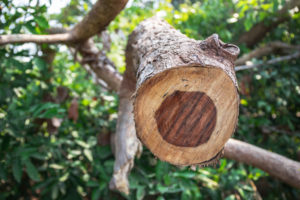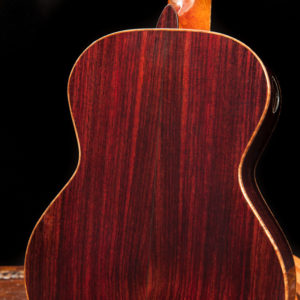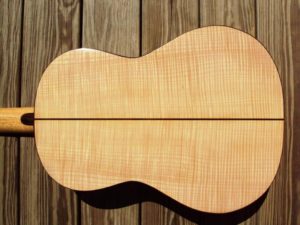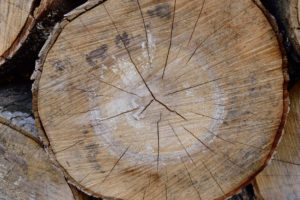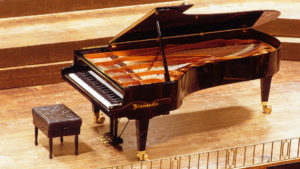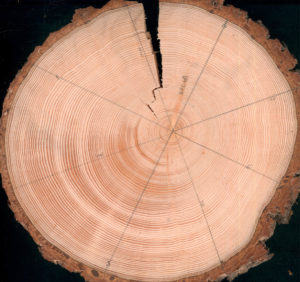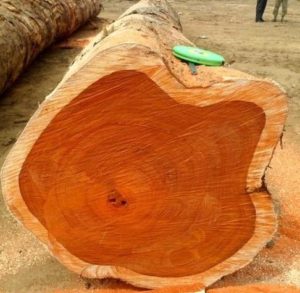THE LEAFLET
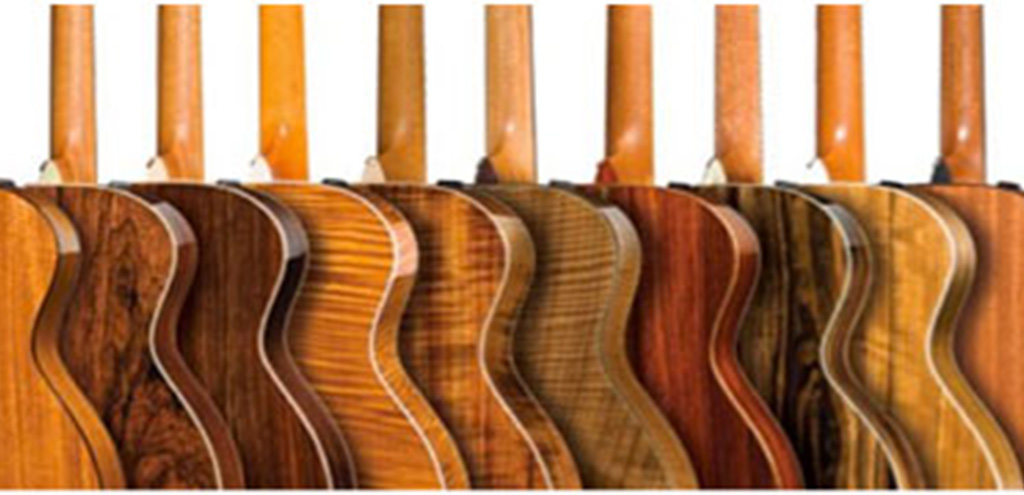
Tonewoods
In our urban forestry world, we’re often dialed into a few of the many benefits trees provide: shade to cool homes and sidewalks and their ability to mitigate climate change by absorbing carbon dioxide and reducing stormwater runoff. We often forget about one of the original uses for trees: wood! While lumber milled from trees has been an integral part of civilization (houses! bridges!) it also has another oft-forgotten feature in our urban forestry world – wood is also really pretty.
Slabs of wood have been highlighted in everything from flooring to frames to something that provides no function except beauty – musical instruments!
Tonewood, or wood with particular tonal properties that make them especially suited for woodwind or acoustic instruments, are as varied and beautiful as our urban forest. Plus, the wood used to build an instrument has enormous effects on its sound and price. Various woods have distinct sound qualities, especially when used for the top of an acoustic guitar, which is the most important wooden tonal element of the instrument.
- Photo courtesy Lichty Guitars.
Rosewood (Dalbergia)
One of the most popular and traditional guitar woods of all time, rosewood is prized, and often illegally trafficked. The most common kinds, Brazilian and Indian rosewood, have a unique coloring, polish well, and have attractive coloring and ring patterns. Therefore, these parts of the wood are usually reserved for making the neck or tuning pegs of instruments. The name rosewood comes from the wood’s strong, sweet smell, which persists for many years.
- Courtesy of Josred Handmade Guitars
Maple (Acer)
Red Maple is one of the most common varieties in guitar building – and unlike the rare rosewood red maples are one of the most common trees found in the U.S. Maple is considered sonically “transparent” as it lets the tonal character of the top ring through without significant tone coloration from the back and sides. Traditionally used for the backs and sides of violin family instruments, it is also frequently seen in acoustic guitars and mandolins. Electric guitars frequently feature maple necks, as it is one of the hardest and most stable tonewoods, so it can withstand high tension. Modern piano’s frames are also usually made of maple or beech. While you may not grow it to harvest and turn into a musical instrument, you too can enjoy the beauty of a maple tree when you work with us to plant one on your property for free!
- Photo courtesy Riverton Piano.
Spruce (Picea)
If you think that spruces are only good for Christmas trees, think again. Spruces are often used in the soundboards of instruments from the violin, mandolin, guitar, and harpsichord families; as well as the piano. Spruce is particularly suited for this use because of its high stiffness-to-weight ratio. Commonly used varieties are Sitka spruce (one of the most popular woods for acoustic guitar tops), Adirondack spruce (with a rich, full, clear and loud tonal quality), Engelmann spruce (lighter in color, weight, and tone than most other spruces), and European spruce (which was the leading topwood pre-World War II before it was over-harvested). And the great thing about spruces is that you can find them in almost all the four corners of the globe – maybe even in your yard? Certain spruces would make a great addition to your yard. Let us help you plant one for free!
- Photo courtesy Lichty Guitars.
Mahogany (Swietenia)
Mahogany lumber prized for its aesthetic qualities, its durability, and its distinctive color. As such, it’s a common feature in the manufacture of bespoke furniture and paneling, as well as boats. Oh, and of course, there’s the connection with musical instruments. True mahogany, the sought-after wood for guitar building, comes only from the three species of the genus Swietenia, tropical trees that, when converted to timber, are collectively referred to as “genuine mahogany.” Honduran mahogany is the species most often seen in the guitar-building world, with the rare Cuban mahogany and smaller Pacific Coast mahogany rounding out the genus. Thanks to intense harvesting, most “genuine mahogany“ trees are listed as endangered and are illegally trafficked for furniture and instruments. These days, most marketed mahogany is African mahogany – cheap, abundant, and of comparable quality to its Central American counterparts.
Listen to the music created by these tonewoods as you relax in the shade of your newly planted tree – that we helped you pick and plant for free! While they may not be endangered or exotic, there are plenty of trees that are well suited to D.C. and your yard!
